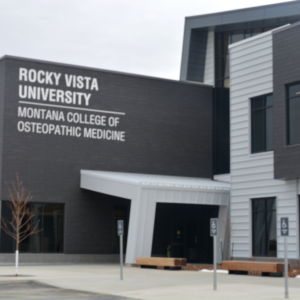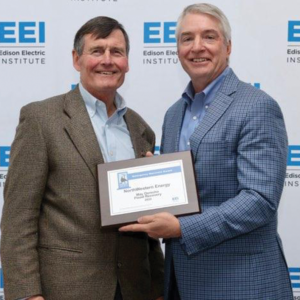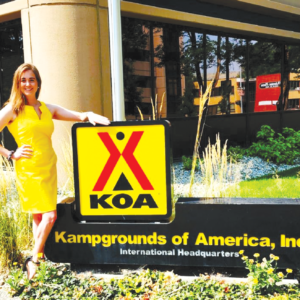By Keely Larson, From Kaiser Health News
Jenna Eisenhart spent nearly six years as a licensed therapist in Colorado before deciding to move to a place with a greater need for her services. She researched rural states facing a shortage of behavioral health providers and accepted a job as a lead clinical primary therapist at Shodair Children’s Hospital in Helena, Montana, in January 2018.
But she couldn’t start her new job right away because state officials denied her application for a license to practice in Montana on the grounds that her master’s degree program required only 48 credits to complete instead of 60.
Eisenhart spent nearly $7,000 to earn 12 more credits to meet the requirement, something she acknowledged not every provider would be able, or want, to do.
“I’m coming here as a licensed therapist to provide services that Montana desperately needs and you’re saying, no, you’re educationally deficient, when that’s not actually true,” said Eisenhart, now the director of clinical services at Shodair. “It kind of made me feel unwanted.”
Eisenhart’s difficulties are an example of the problems that health professionals can have in obtaining a Montana license to practice. State lawmakers are considering proposals to make it easier for professionals with out-of-state licenses to work in Montana. The need to attract more workers is particularly acute amid a national mental health crisis and a worker shortage, both heightened by the covid-19 pandemic. But lawmakers, behavioral health advocates, and providers say the need is so great, they doubt that lowering barriers for out-of-state practitioners will be enough.
One measure, House Bill 101, sponsored by Republican Rep. Jane Gillette and drafted by the Children, Family, Health and Human Services Interim Committee, covers social workers, professional counselors, addiction counselors, marriage and family therapists, and behavioral health peer support specialists. It would let the Department of Labor & Industry automatically license those providers in Montana if they meet certain requirements, like having an active license from another state for at least a year and having proper educational credentials.
Eisenhart said if the bill had been in effect in 2018, she wouldn’t have had to jump through as many hoops to work in Montana.
Another, House Bill 152 sponsored by Republican Rep. Bill Mercer and requested by the state Department of Labor & Industry as part of Gov. Greg Gianforte’s “Red Tape Relief” initiative, aims to streamline the licensing process for all occupations regulated by the department, from nurses to real estate appraisers.
HB 152 is designed to simplify the process for licensing the more than 50 professions and 150 types of licenses under the purview of the labor department, Eric Strauss, administrator of the department’s Employment Standards Division, said in a Jan. 18 committee hearing on the bill.
Last year, the department received more than 21,300 applications for licensure across professions, and half of those were from out-of-state professionals, said Dave Cook, the department’s deputy administrator of professional licensing. Health care-related licenses had an even higher share of out-of-state applicants — 60%, he said.
HB 152 would improve license mobility by creating a standard the department uses across professions to determine whether out-of-state license holders are qualified to work in Montana, department officials said. It also would establish a timeline of 30 days for the agency to issue a license after receiving a completed application.
“This helps the engineer, psychologist, social worker, or cosmetologist who has practiced for 20 years to get licensed without being required to get additional education or take an examination,” said department spokesperson Jessica Nelson.
Though the two bills have the same aim, labor department officials criticized Gillette’s bill on behavioral health worker licensing as not going far enough to remove obstacles for out-of-state workers.
HB 101 “creates additional burdens to licensure, including requiring residency and mandating that a particular licensing examination has been taken,” Nelson wrote in an email. “These are issues that HB 152 is attempting to reform.”
Gillette said she doesn’t think her bill or Gianforte’s bill alone would solve the workforce problem in health care. To make a substantial change, Gillette said, Medicaid provider reimbursement rates need to be higher.
“It’ll do something but it’s not going to fix it by any stretch,” Gillette said, referring to streamlining the licensing process.
A study commissioned by the 2021 legislature found that Montana’s Medicaid provider rates were too low to cover the cost of many of those who work with seniors, people with disabilities, and children and adults with mental illness.
The study found that the state’s Medicaid program is now paying, on average, 85% of the actual cost of care for adult behavioral health services, for example. Gianforte’s proposed budget would boost that funding next year to 94% of costs, on average, before lowering it again to 91%. The budget proposal is before lawmakers, and, to fully fund the services, providers are asking them to raise the rates higher than the governor proposes.
Mary Windecker, executive director of the Behavioral Health Alliance of Montana, which strives to make community-based services more accessible to patients, said that her organization recommended the interim committee come up with what became HB 101 but that HB 152 goes further than they could have hoped.
Windecker said every agency that her organization represents is experiencing staffing shortages of 25% to 30%. Up to 90% of the alliance members’ income comes from Medicaid reimbursements, she said, and it’s not enough. She said speeding up the licensure process and raising the Medicaid provider rates in accordance with a study the Montana Department of Public Health and Human Services instigated are the main strategies needed to satisfy demand for behavioral health services.
“We’ve got to get people in here to work,” Windecker said. “We have a huge labor shortage and with the Medicaid reimbursement so low, we’re having a really hard time hiring people.”
According to the Board of Behavioral Health, there were 5,126 active behavioral health providers in Montana as of last April. The Montana chapter of the National Alliance on Mental Illness reported 163,000 adults in Montana have a mental health condition.
Keely Larson is the KHN fellow for the UM Legislative News Service, a partnership of the University of Montana School of Journalism, the Montana Newspaper Association, and Kaiser Health News. Larson is a graduate student in environmental and natural resources journalism at the University of Montana.
KHN (Kaiser Health News) is a national newsroom that produces in-depth journalism about health issues. Together with Policy Analysis and Polling, KHN is one of the three major operating programs at KFF (Kaiser Family Foundation). KFF is an endowed nonprofit organization providing information on health issues to the nation.







